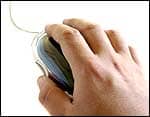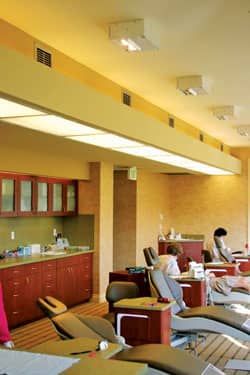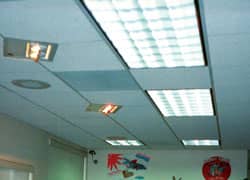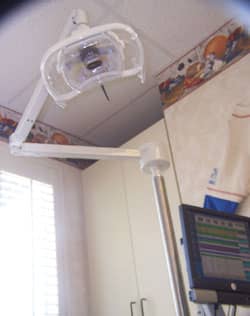by David W. Alger, DDS, MSD
The pros and cons of various orthodontic lights
-
- David W. Alger,
DDS, MSD
Lighting in the orthodontic office is of great importance to all orthodontists. It can be broken down into two basic classifications: indirect (ambient) and direct (operating) lights. Since semiretiring in 1989, I have worked in countless offices as a locum tenens. This has been an eye-opener. I have seen some offices where the lighting was wholly inadequate to do quality work. To function efficiently and effectively, both staff and orthodontists benefit from having adequate ambient and operating light.
Indirect Lighting
Ambient lighting is import for several reasons. The first reason is to create an environment in which the staff can adequately view the instruments and equipment and have an overview of the patient’s needs. Second, it is important in making the office look attractive for the patients. The first impression a patient gets in an office is crucial. No one is very impressed with a dark, dingy-looking office.
Modernization of the orthodontic office saw orthodontists striving to have open operatories. This led many to do away with the traditional unit and left no place to mount a standard dental operating light. For many years, a great number of orthodontists tended to utilize the ambient light for operating as well. The main drawback to this is that there is no “direct” beam of light projecting into the oral cavity. No matter how bright the indirect light, the lack of a “direct” beam makes it difficult to see into the back of the oral cavity. This drawback is most evident when bonding first and second molars. The lack of a light “beam” makes it very difficult to evaluate the preparation of the enamel surface. This lack of a light beam caused orthodontists to recognize the need to have better operating light.
Direct Lighting
Direct lighting (operating light) can be classified as flexible, stationary, and semiflexible stationary.
Flexible lighting is the traditional operating light, which can be attached to the dental unit directly or to the ceiling via a track. There are a number of this type of operating light: the traditional operating light that is attached to a pole on the unit, the so-called “gooseneck” light that is also attached to the unit, and the “track light” that is attached to the ceiling. The main advantage of the flexible operating light is that, if it is properly mounted, the clinician has very good lighting access to all parts of the oral cavity. The disadvantage is that the light is always in the way of the operator and has to be moved and repositioned every time the patient changes position in the chair. Also, many of the flexible operating lights are easily accidentally displaced, so they do not stay positioned in the spot in which they were originally put by the clinician.
-
- Looking to upgrade your lighting? Check out the options in our Buyer’s Guide.
Stationary operating lights are ceiling-mounted and can offer a great deal of light but lack any degree of flexibility. No matter how much light is produced, there is still no beam of light projecting into the oral cavity. This beam is of utmost importance in bonding, especially in the posterior part of the oral cavity. I have heard some complaints of excessive heat produced by stationary lights as well. Their main advantage is that they are out of the way of the operator and patient and need no adjustment. This is a very good quality in a busy orthodontic practice.
Semiflexible stationary operating lights such as the Alger-Lite™ are mounted to the ceiling and, if mounted properly, supply a very condensed beam of light and offer an adequate degree of flexibility for the orthodontist. (In some specialties such as periodontics, oral surgery, and some restorative dentistry, clinicians use a headlight as an adjunct.)
The advantage of semiflexible stationary lighting is that it is never in the operator’s way. When the patient changes position, the light beam stays in its original position and needs no adjustment when the patient returns. Also, it gives the operatory a very clean appearance. This factor became important when, as I mentioned previously, orthodontists began creating an open-bay concept in their offices, eliminating the dental unit and striving to have an airy appearance to the operating theater. The main disadvantage of this type of lighting is that there are some limits to its flexibility, as the movement is “up and down” and not lateral. The lateral movement is somewhat addressed in that the beam is horizontal in shape and thereby offers greater utilization. Also, as previously noted, the light must be mounted in the proper relation to the chair and patient. If the chair is moved to a great degree, some of the utility of the semiflexible stationary operating light is reduced.
-
- Surface-mount lighting.
-
- A combination of direct and indirect lighting.
-
- Flush-mount lighting.
-
- The Alger-Lite.
David W. Alger, DDS, MSD, is in private practice in Fort Worth and Arlington, Tex. He is a diplomate of the American Board of Orthodontics and has been active in a number of orthodontic associations. He has a financial interest in products mentioned here. He can be reached at











